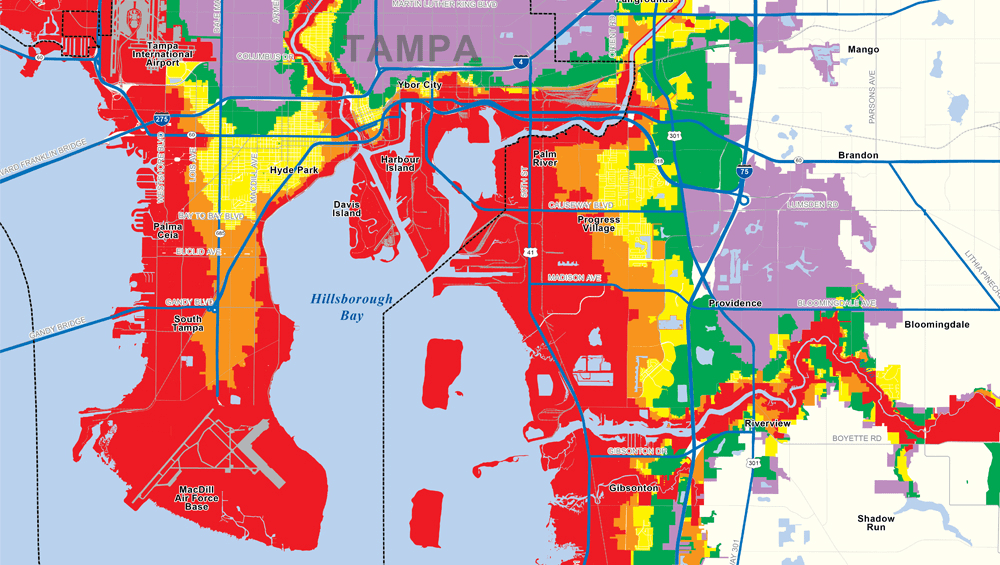Comparing Hurricane Milton to Historical Storms: Is It the Strongest Ever?
Hurricanes have long captivated the public's imagination, and for good reason: their sheer power, devastating impact, and unpredictable nature can alter entire landscapes and communities in mere hours. With the recent emergence of Hurricane Milton, discussions surrounding its strength compared to historical storms have intensified. As meteorologists and climate scientists assess the storm's intensity and trajectory, questions loom large: Could Hurricane Milton be the strongest hurricane ever recorded? How does it measure up against the strongest hurricanes in U.S. history, and where does it fit in the pantheon of the worst hurricanes ever? This blog post aims to dissect these vital questions while comparing Hurricane Milton with other stormy behemoths like Hurricane Katrina, Hurricane Helene, Hurricane Allen, and Hurricane Irma from 2017.
 The Science of Hurricane Classification
The Science of Hurricane Classification
Before we delve into comparisons, it's important to set the framework for understanding hurricane strength. Hurricanes are rated on the Saffir-Simpson Hurricane Wind Scale, which classifies storms into five categories based on sustained wind speeds:
- Category 1: 74-95 mph
- Category 2: 96-110 mph
- Category 3: 111-129 mph
- Category 4: 130-156 mph
- Category 5: 157 mph and higher
A storm reaches its "strongest" status when it charts into Category 5 territory. So, what are the contenders for this title?
The Contenders: Historical Context
1. Hurricane Katrina (2005)
Arguably the most infamous storm in U.S. history, Hurricane Katrina made landfall on August 29, 2005, with winds reaching 125 mph (Category 3) and a storm surge that devastated New Orleans and the Gulf Coast. But while it was not the strongest in terms of wind speed, its extensive socio-economic impact, particularly due to failure of levees, makes it one of the worst hurricanes ever. Almost 2,000 lives were lost, and damages reached an estimated $125 billion, making it a benchmark for assessing hurricanes.
2. Hurricane Allen (1980)
Hurricane Allen achieved headlines in August 1980 as one of the most potent Atlantic hurricanes on record. It reached winds of 190 mph, reflecting its Category 5 status, and left a lasting imprint on meteorological history. Primarily impacting the Caribbean and Mexico, it resulted in approximately $1 billion in damages—substantial for its time—and is classified among the strongest hurricanes in U.S. history.
3. Hurricane Irma (2017)
Hurricane Irma emerged as a ferocious threat in 2017, boasting maximum sustained winds of 185 mph. This storm demonstrated an extensive impact, causing catastrophic damage across Florida, the Caribbean, and parts of the southeastern United States. The enormity of Irma's destruction showcases the dire threat posed by Category 5 hurricanes, with damages surpassing $65 billion.
4. Hurricane Helene (2006)
Not as destructive as some of its predecessors, Hurricane Helene formed in September 2006 and peaked as a Category 3 hurricane. Its winds reached 115 mph, but its primary legacy lies in the lessons learned about preparedness and forecasting, bringing attention to the transitions of hurricanes from tropical storms to major hurricanes.
Assessing Hurricane Milton
As Hurricane Milton began its disruptive trajectory, early assessments indicated it could contest for the title of the strongest hurricane ever. With initial reports suggesting sustained winds approaching 175 mph, Hurricane Milton catapulted into the discussion amongst the elite Category 5 storms. The immediate comparisons with both Hurricane Irma and Hurricane Allen highlighted its significant strength, making meteorologists uneasy due to its predicted path toward highly populated coastal areas.
Environmental Conditions and Climate Change
The frequency and intensity of hurricanes, including Hurricane Milton, are increasingly understood through the lens of climate change. Warmer sea surface temperatures have been correlated with more potent storms. This has been observed each season as hurricanes continue to present a stronger profile compared to historical records, making established patterns harder to predict while driving home the urgency to develop better forecasting and resilience strategies.
Conclusion: A Relative Strength
While at the time of writing, Hurricane Milton undeniably showcases records that place it among the strongest hurricanes in recent history, it is crucial to navigate the conversation with a nuanced perspective. Factors such as localized impact, human lives affected, and economic repercussions must influence how we label storms as "the strongest" or "the worst."
Given that Hurricane Milton is actively impacting regions and further data is still pending, its ultimate designation concerning strength and destructiveness remains undetermined. However, by examining the storm's characteristics and context, it is clear that both current hurricanes and historical counterparts like Hurricane Katrina, Hurricane Allen, and Hurricane Irma serve as a stark reminder of nature's overwhelming power and the continued need for preparedness, resilience, and action in the face of such unforgiving forces.
As the intense storm season unfolds, we remain vigilant, fostering an understanding of the evolving nature of hurricanes, reinforcing preparedness, and nurturing resilient communities in their wake. Only time will tell Milton’s legacy in the broader narrative of hurricane history, but it serves as a call to action—both to mitigate risks and to confront the ever-growing challenges posed by climate change.